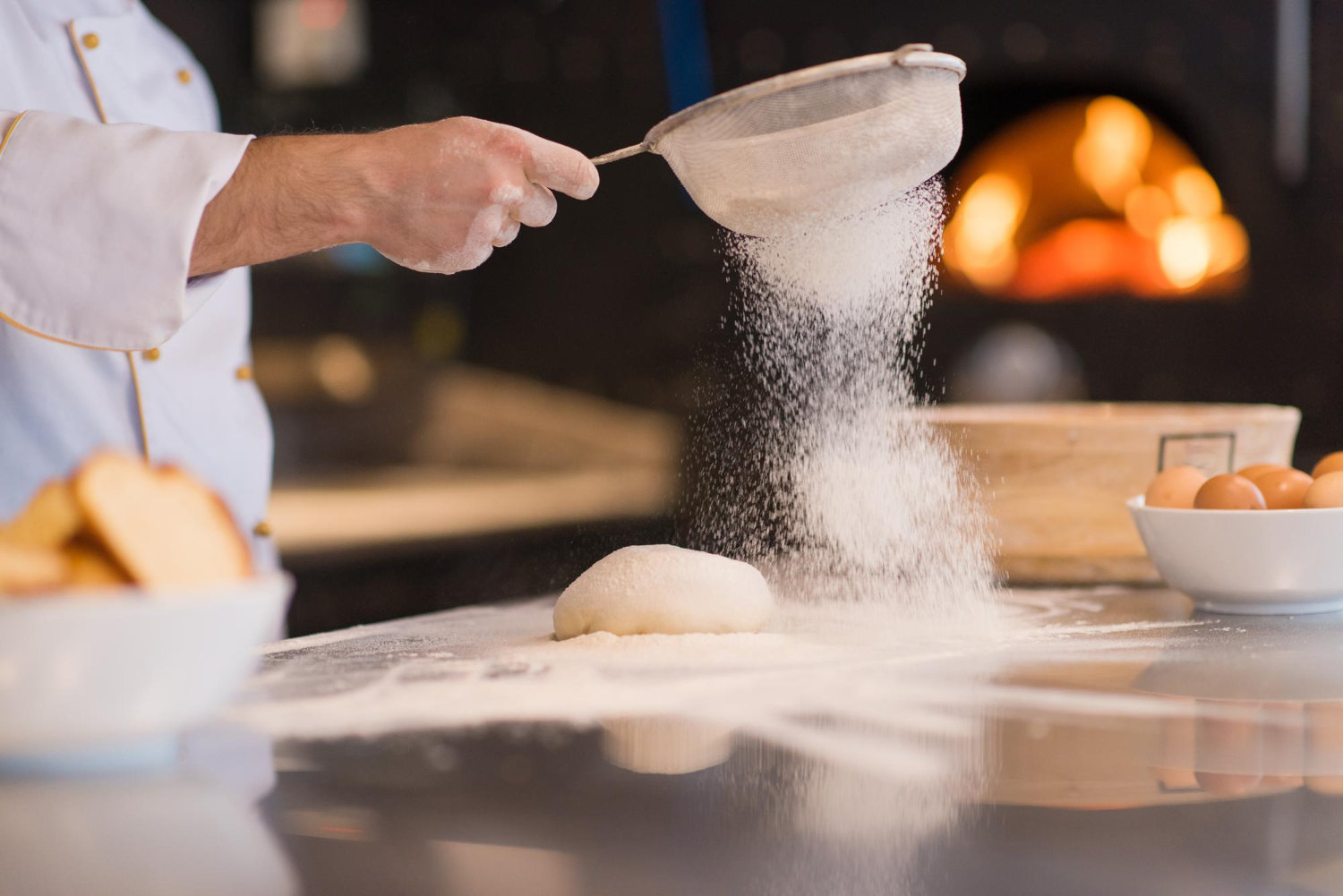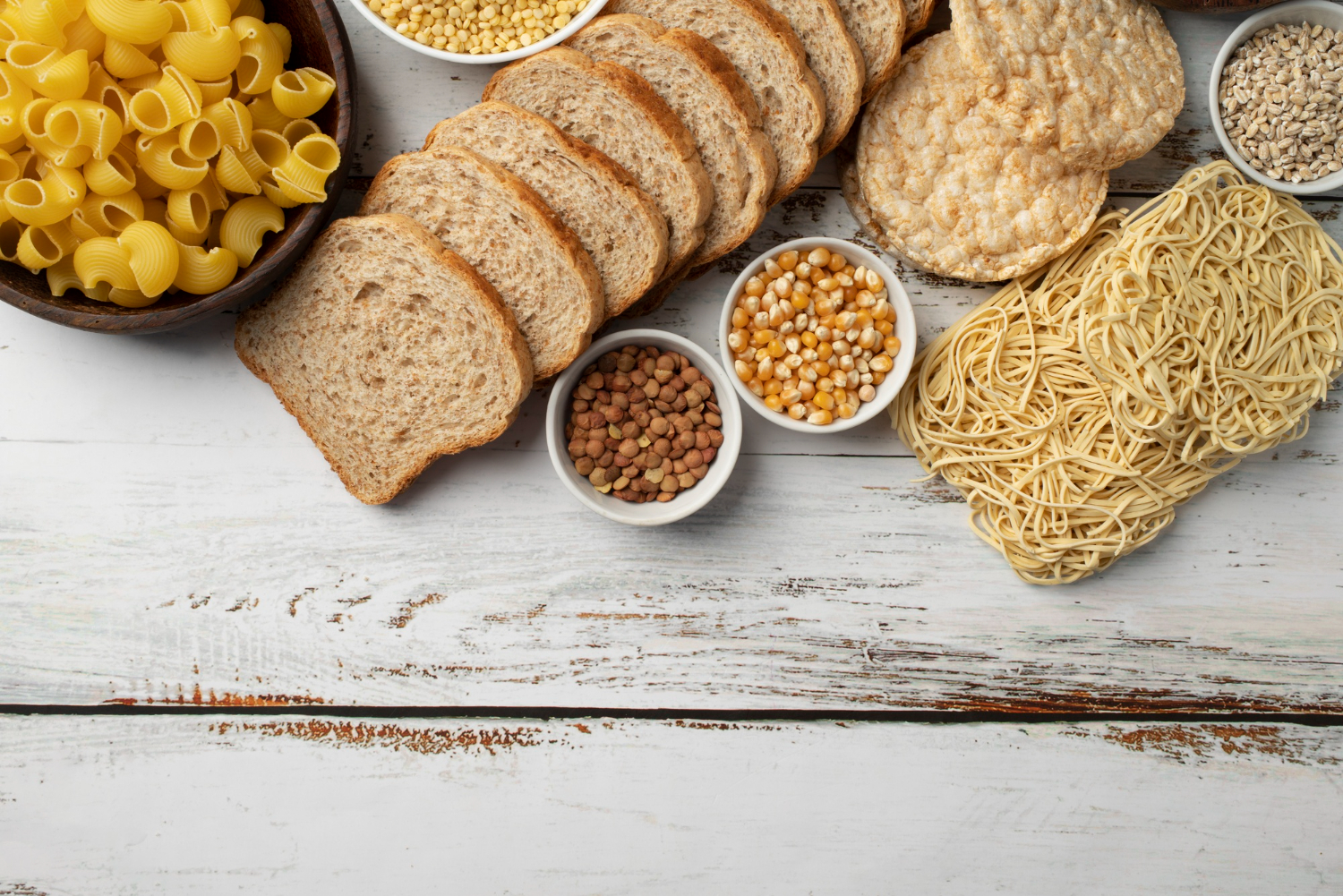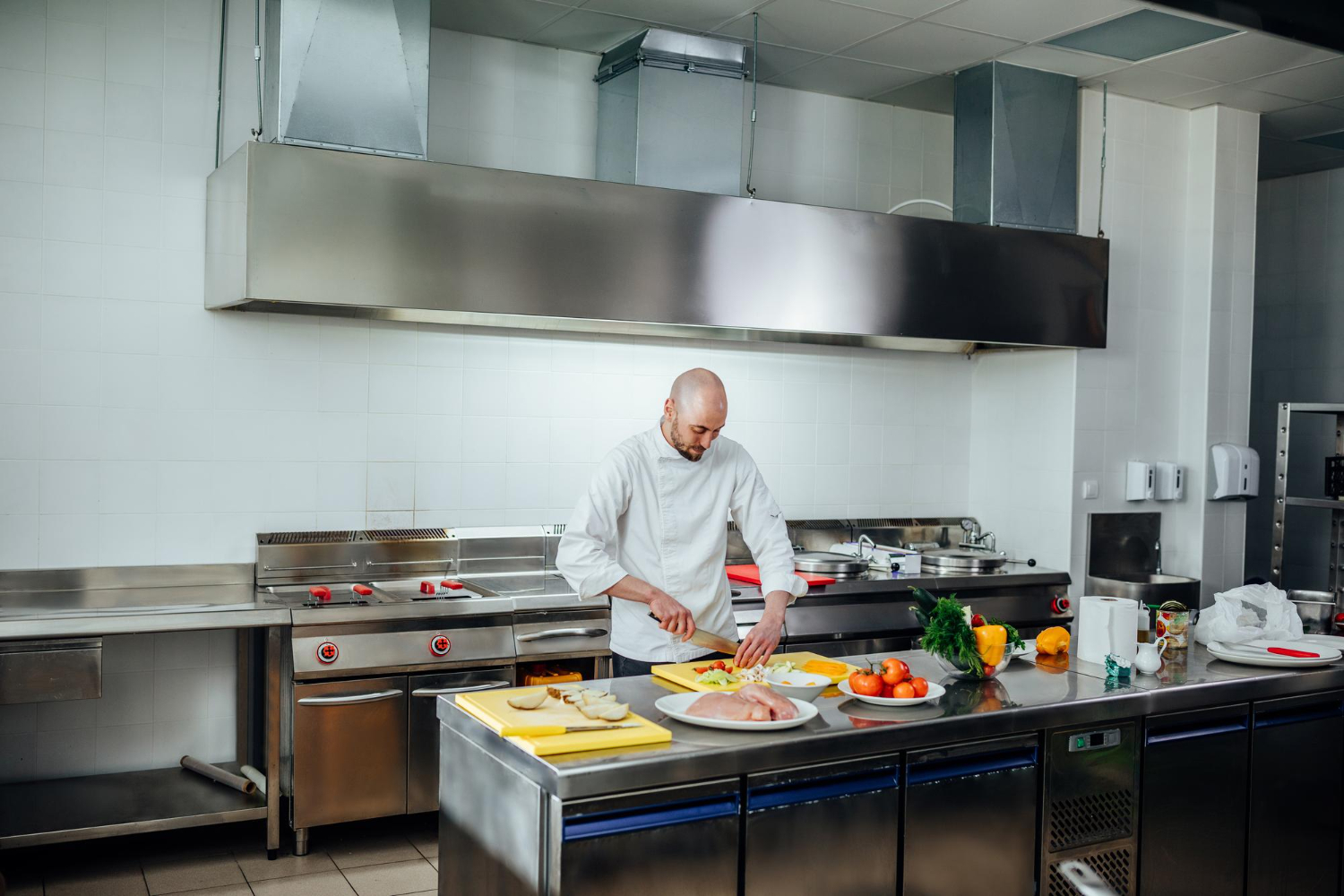Gluten-free is not the same as gluten-friendly. So how do you know if your product can be labeled as gluten-free?
It’s more complex than using gluten-free ingredients, and knowing the difference is crucial to avoid mislabeling your product. Here are the differences, the legal requirements, and everything you need to know about what gluten-friendly means.
What is Gluten, and Why is it a Problem?
The term gluten describes a group of proteins found in wheat that are in many kinds of foods. In addition to bread and other baked goods, gluten is found in most pasta, soups, malts and milkshakes, food coloring, cereal, and beer.
For the overwhelming majority of people, gluten poses no health risks. But an estimated 1-2% of people globally have celiac disease, an autoimmune disorder triggered by consuming gluten. When people with celiac disease ingest gluten, their immune system perceives a threat and mounts an attack, which damages the villi lining the small intestine. Over time, the small intestine becomes too damaged to absorb nutrients properly, which leads to many other health issues. The only treatment for celiac disease is a gluten-free diet.
An additional 1-3% of the population suffers from gluten sensitivity, or gluten intolerance, a condition less severe than celiac disease. On the surface, it causes similar symptoms, including bloating, gas, diarrhea, nausea, brain fog, joint pain, and fatigue. But, while it makes people feel very sick, it does not damage the small intestine.
Similar conditions related to gluten sensitivity include wheat allergy, where the immune system mistakes gluten or some other protein found in wheat as a virus or bacteria. The immune system goes into overtime to produce an antibody to the protein, and the immune system response causes congestion, breathing difficulties, and other symptoms.
Gluten ataxia is another bodily response to gluten. It’s an autoimmune disorder that affects nerve tissues, causing muscle control and muscle movement issues.
Gluten-friendly vs. Gluten-Free
 Because gluten is a growing concern in the public eye, gluten-free foods are increasingly popular. However, restaurants and food services should be careful about labeling foods with the term “gluten-free.”
Because gluten is a growing concern in the public eye, gluten-free foods are increasingly popular. However, restaurants and food services should be careful about labeling foods with the term “gluten-free.”
Gluten-free is a voluntary term you may (or may not) use in labeling, but if you do use it, the food labeled must comply with the guidelines.
What is Gluten-Free?
The gluten-friendly definition standards set by the Federal Food and Drug Administration (FDA) for food labeling are:
Any foods that carry the label “gluten-free,” “no gluten,” “free of gluten,” or “without gluten” must contain less than 20 parts per million (ppm) of gluten. Most people with celiac disease can tolerate foods with minimal amounts of gluten.
In addition to the limit of gluten to 20 ppm, foods may be labeled “gluten-free if the food does not contain the following:
- An ingredient that contains wheat, rye, barley, or crossbreeds of these grains.
- An ingredient derived from these grains that has not been processed to remove gluten.
- An ingredient derived from these grains that has been processed to remove gluten but results in the food containing more than 20 ppm of gluten,
What is Gluten-Friendly?
Gluten-friendly is a term adopted by many restaurants that serve gluten-free items alongside foods containing gluten. For example, a sandwich shop with gluten-free bread options on the menu. When gluten and gluten-free foods are prepared in the same kitchen, there is no way to guarantee that any food is entirely gluten-free due to the possibility of cross-contamination.
Gluten-friendly means that no gluten was used in the item, but gluten-free cannot be guaranteed. Most people with mild gluten sensitivities can eat gluten-friendly foods. People with wheat allergies, severe gluten intolerance, and celiac disease could become seriously ill if food is labeled gluten-free but is not.
Restaurant staff, including kitchen staff, bartenders, and servers, understand the difference between gluten-free and gluten-friendly foods, so they can keep guests safe and answer their questions. This includes:
- Preparation
- Surfaces and equipment safety
- Cross-contamination avoidance procedures
- All ingredients used in each dish
In most restaurant kitchens, achieving gluten-free food is next to impossible. If flour or other gluten products are used, and cooking and prep surfaces are shared, avoiding gluten cross-contamination requires constant diligence. To protect your business from lawsuits, ensure your staff is educated, knows what gluten-friendly means, and makes no guarantees you cannot back up in practice.
IHOP, for example, has this disclaimer on its website regarding gluten-friendly pancakes:
“IHOP defines gluten-friendly as menu items prepared without gluten-containing ingredients based on information from our approved suppliers. We do not claim that items are “gluten-free” because we cannot confirm that they meet the FDA’s definition of “gluten-free” (<20 parts per million of gluten). Because we have multiple sources of gluten in our shared cooking and prep areas, including common fryer oil, we are unable to guarantee that any menu item can be completely free of gluten or allergens.”
What Foods Contain Gluten?
 Gluten is present in a huge variety of foods. Let’s start with the primary sources:
Gluten is present in a huge variety of foods. Let’s start with the primary sources:
- Wheat – all varieties, including durum, einkorn, emmer, kamut, and spelt
- Barley
- Rye
- Triticale—a cross between wheat and rye
- Oats, in some cases—Oats are gluten-free, but they are often cross-contaminated during processing in the same food manufacturing plants that produce wheat, barley, or rye products. Unless an oat product is labeled gluten-free, there is no way to be sure. And even then, some people with celiac disease react to oats labeled gluten-free.
Different Names for Wheat Flour
Not all flour is made from wheat today—for example, almond and coconut flour. Flours that are made with wheat have different names depending on how they are processed. All of these types of flour contain gluten:
- Enriched flour
- Farina
- Graham flour
- Self-rising flour
- Cake flour
- Bread flour
- Semolina (used in pasta and couscous)
Processed Foods that Contain Gluten
Wheat, barley, and rye are all ingredients typically used in a variety of processed products, including some you might not expect:
- Baked goods, including bread, cakes, pies, crackers, muffins, cereal, and pastries
- Candy
- Communion wafers
- French fries
- Gravy, sauces, dressing, condiments, and any food that contains roux
- Seasoned rice mix
- Soup, soup mix, and bouillon
- Chips and other snack foods
- Pasta
- Malt and any food that contains malt flavoring
- Imitation meat and seafood
- Hot dogs, sausage, and processed deli meats
As a restaurant owner, you are expected to take good care of your customers and your staff. For your restaurant to be successful, it must meet high standards of cleanliness, and the quality of your food should be consistent with each visit to deliver the best possible customer experience. In addition, today’s diners expect you to cater to their dietary preferences and needs. That includes knowing what gluten-friendly means—and the critical difference between gluten-free and gluten-friendly.
How to Run a Gluten-Friendly Kitchen
 Now that you know what gluten-friendly means, how can you implement a gluten-friendly restaurant kitchen? It requires diligence, training, and a commitment to customer safety. Here are a few quick tips to run a gluten-friendly kitchen.
Now that you know what gluten-friendly means, how can you implement a gluten-friendly restaurant kitchen? It requires diligence, training, and a commitment to customer safety. Here are a few quick tips to run a gluten-friendly kitchen.
1. Separate Preparation Spaces
While you can never ensure every food that comes out of a gluten kitchen is actually gluten-free, the best step you can take is to have completely separate prep and cooking areas for gluten foods and gluten-friendly foods.
This means you’ll need separate everything—cutting boards, utensils, and knives, pots and pans, the works. Keep one oven and one stovetop, and at least one prep area designated for gluten-free cooking. If space is an issue in your restaurant kitchen, then a “gluten-friendly” kitchen might not be in the cards for your restaurant.
2. Train Staff in Gluten-Free Cooking Guidelines
All staff should be aware of any gluten-free offerings on the menu. Additionally, if a customer orders a gluten-free menu item, servers should make sure to ask if it’s an allergy or sensitivity and alert the kitchen accordingly.
This is where diligence and training will really shine through. Even during busy rush hours, servers and kitchen staff should be conscious and careful with customer orders and allergies. This is the ultimate test of a positive dining experience. If your customers get sick from mishandled food, they’re not likely to return to your restaurant.
3. Manage Your Menu
Your entire menu does not have to be gluten-free in order to manage a gluten-friendly kitchen. Are there certain menu items that can be easily made gluten-free or gluten-friendly? Can you offer gluten-free versions of your most popular menu items?
Having a gluten-friendly kitchen will only be worth it if you have enough menu items—that are ordered frequently enough—to justify the added expense of doubling most of your kitchen equipment. Additionally, listen to your guests. If you hear requests for gluten-free often, it might be time to consider revamping your kitchen and your menu to make it gluten-friendly.
Establishing a gluten-friendly restaurant kitchen is achievable if you approach the task the right way. Make sure all your staff—front of house and kitchen staff alike—knows what gluten-friendly and gluten-free means and are familiar with your menu offerings. Set up separate workspaces in your kitchen, keep strict sanitation guidelines, and listen to your customers’ feedback. With these diligent practices, you can run a successful gluten-friendly kitchen in your restaurant.
Want more restaurant management resources and tips? Visit the Boiler Room Blog and learn more about how Reliable Water Services can help with all of your restaurant hot water needs.

